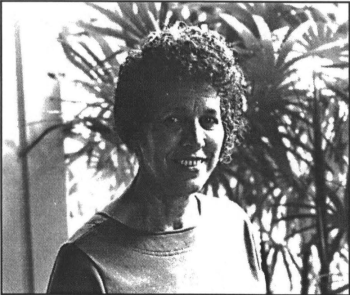Lenore K. Van Gieson

Tsunamis Remembered: Oral Histories of Survivors and Observers in Hawai‘i
Life history interviews with individuals who witnessed and survived tsunamis-particularly the 1946 and 1960 disasters on the Big Island of Hawai'i. Thirty individuals-mostly residents of Hilo and Laupahoehoe-recall their experiences before; during, and after the 1946 and 1960 tsunamis which were arguably the most destructive natural disasters in modem Hawaiian history.
Lenore Kumulani Van Gieson was born June 16, 1935 in Hilo, Hawai'i. Her father, Ebenezer Coit Hobron Van Gieson, was from a Honolulu family and educated at Kamehameha Schools; her mother, Victoria Kumulani Todd Van Gieson, a Hilo native. The oldest of four siblings, VanGieson grew up on property owned by her mother's side of the family in the Keaukaha section of Hilo. This section, known as Pu'umaile by old-timers, was an area where many of Hilo's elite resided full-time or part-time in beachfront homes and cottages. Van Gieson spent much of her childhood swimming and engaging in other beach-related activities with the neighborhood children. She attended Riverside School, Hilo Intermediate School, and Hilo High School, graduating in 1953. VanGieson worked for Aloha Aina Tours before marrying William K. Warren in 1955. She became a homemaker, raising six children, before returning to the work force in 1970 as a clerk and executive housekeeper for Hilo Lagoon Hotel. In 1980, she worked at Hilo Hawaiian Hotel. VanGieson decided to attend college and received her bachelor of business administration degree from the University of Hawai'i at Hilo in 1995. Since that time to the present, she has been employed at the university. Van Gieson was interviewed near her office at UH-Hilo, vividly recalling the events of her life and April 1, 1946. That morning, she and her three siblings were waiting outside their home on KaJaniana'ole Street for the bus to take them to school. Seeing water running over the road, they knew something was wrong, and ran up densely-covered brush toward higher ground. Returning to the area later in the day, they found their home completely destroyed and the entire street inundated. They boarded rubber rescue rafts and were transported to Hilo. They were temporarily housed at the Naval Air Station barracks near Hilo Airport. Van Gieson today lives in Hilo. In addition to raising six children, she has nine grandchildren and three great-grandchildren.
Scope and Content Note
The oldest of four, a Hilo-born woman recalls growing up in Keaukaha, a middle- and upper-class kamaaina neighborhood. She describes her oceanfront home and how it was destroyed by the 1946 tsunami. She has memories of running from the waves to higher ground and returning later to find nothing left. She comments on the changes which took place after the tsunami.
Program Note:
This interview is part of the Center for Oral History's project Tsunamis Remembered: Oral Histories of Survivors and Observers in Hawai‘i. Interviews from this project are available in the Center's ScholarSpace open access repository.
The Center for Oral History (COH), in the Department of Ethnic Studies at the University of Hawaiʻi at Mānoa, collects, documents, preserves and highlights the recollections of Native Hawaiians and the multi-ethnic people of Hawaiʻi. It produces oral histories and interpretive historical materials about lifeways, key historic events, social movements and Hawaiʻi’s role in the globalizing world, for the widest possible use.
Please Note: The oral histories in this collection are protected by copyright and have been created for educational, research and personal use as described by the Fair Use Doctrine in the U.S. Copyright law. Please reach out Voices@noaa.gov to let us know how these interviews are being used in your research, project, exhibit, etc. The Voices staff can help provide other useful resources related to your inquiry.
The NOAA mission is to understand and predict changes in climate, weather, oceans, and coasts, to share that knowledge and information with others, and to conserve and manage coastal and marine ecosystems and resources. The Voices Oral History Archives offers public access to a wide range of accounts, including historical materials that are products of their particular times, and may contain offensive language or negative stereotypes.
Voices Oral History Archives does not verify the accuracy of materials submitted to us. The opinions expressed in the interviews are those of the interviewee only. The interviews here have been made available to the public only after the interviewer has confirmed that they have obtained consent.
